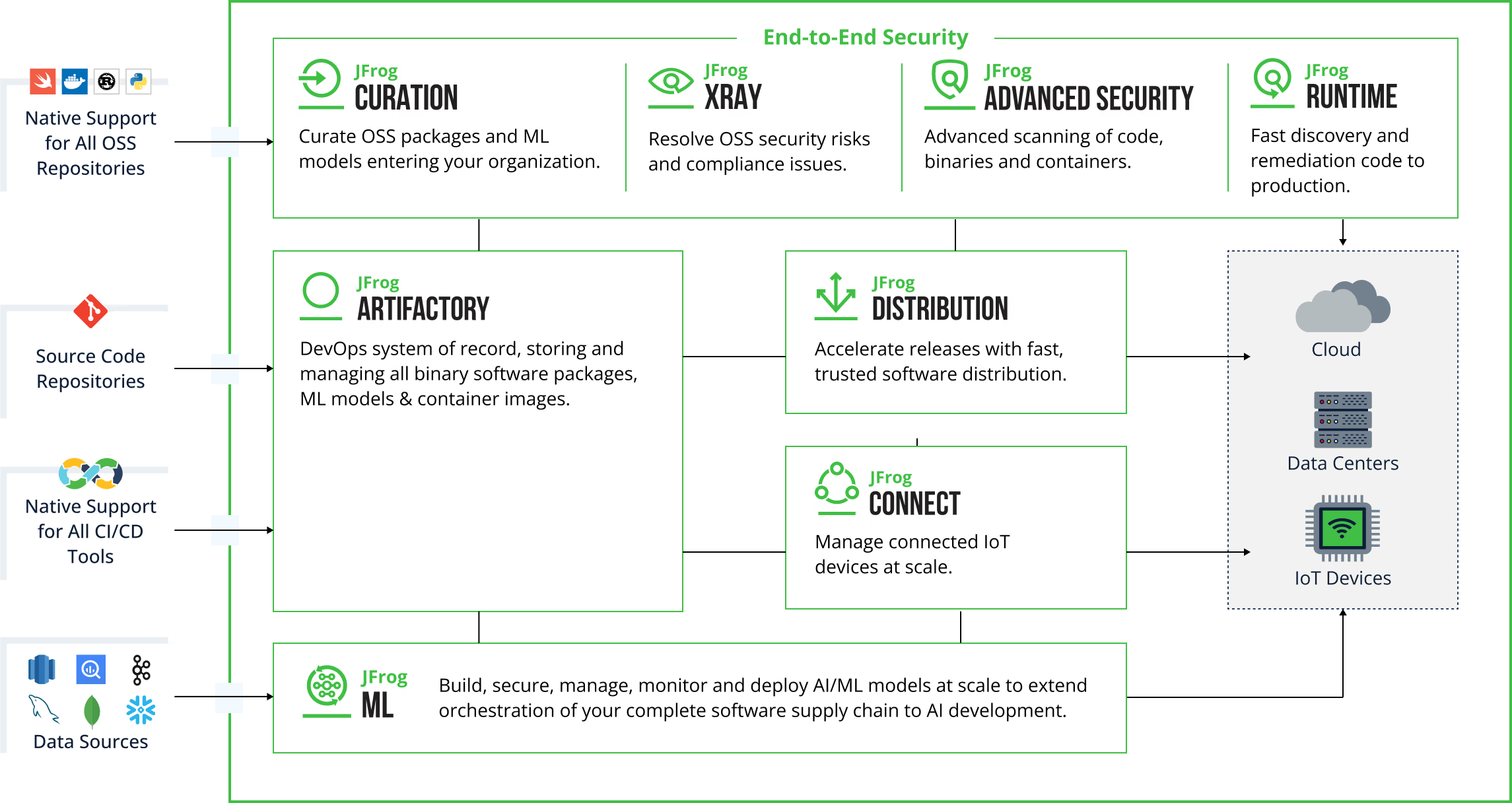helping to deliver secure software updates from code to the edge.
You have been redirected to the JFrog website

und automatisierte Repository-Management-Funktionen.Read Less >


Arbeiten mit Gradle

JFrog Artifactory in weniger als einer Minute als Gradle-Repository einrichten

Java: 12 Gründe für die Verwendung eines binären Repository-Managers bei der Entwicklung mit Java

Beschleunigen Sie Ihre Gradle-Builds mit JFrog Artifactory
Um von Gradle erstellte Artefakte in JFrog Artifactory zu veröffentlichen, müssen Sie das JFrog Gradle-Plug-In verwenden. Zuerst müssen Sie das Plug-in zu Ihrer build.gradle -Datei hinzufügen und es mit den Details Ihres Artifactory-Servers konfigurieren. Nach der Konfiguration können Sie Gradle-Aufgaben wie artifactoryPublish verwenden, um Ihre Artefakte nach Abschluss des Build-Prozesses automatisch in das angegebene Repository in Artifactory hochzuladen.
JFrog Xray verbessert Gradle-Builds, indem es Sicherheits- und Lizenzkonformitätsscans für die erzeugten Artefakte bereitstellt. Es analysiert sowohl direkte als auch transitive Abhängigkeiten Ihrer Gradle-Projekte und identifiziert Schwachstellen oder Lizenzprobleme. Auf diese Weise können Entwickler sicherstellen, dass nur sichere und konforme Komponenten in ihren Anwendungen enthalten sind, um Sicherheitsrisiken zu minimieren und gesetzliche Anforderungen einzuhalten.
Ja, Sie können JFrog Artifactory als Remote-Repository für Gradle-Abhängigkeiten verwenden. Indem Sie Ihr Gradle-Buildskript so konfigurieren, dass Abhängigkeiten von Artifactory aufgelöst werden, können Sie externe Repositorys wie Maven Central oder npm als Proxy verwenden und die abgerufenen Artefakte zwischenspeichern. Dies verbessert die Buildzuverlässigkeit und beschleunigt Builds, indem externe Aufrufe reduziert und lokaler Zugriff auf häufig verwendete Abhängigkeiten bereitgestellt wird.
JFrog Artifactory kann eine Vielzahl von Artefakttypen verwalten, die aus Gradle-Projekten generiert wurden, darunter: